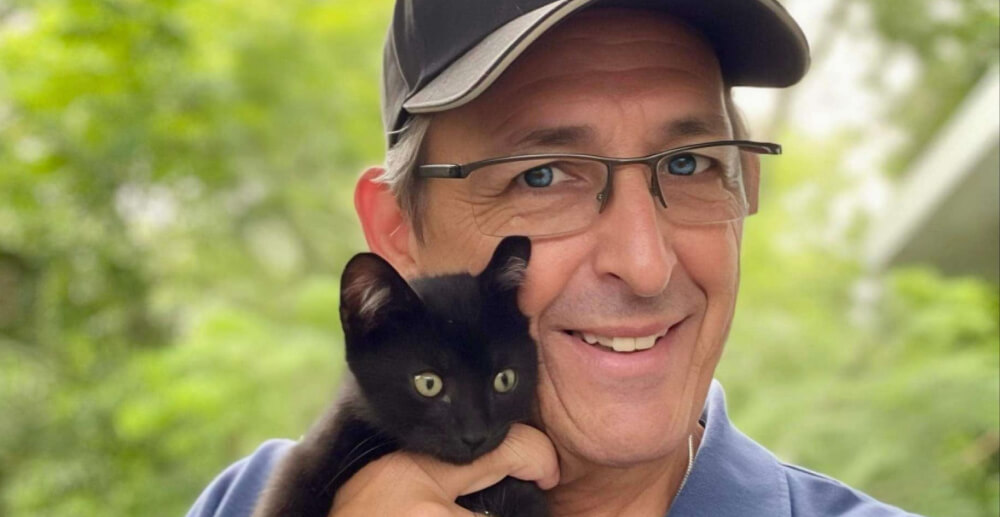Is Suboxone sober? Why does long-term Suboxone treatment have such a bad reputation in recovery circles?
Suboxone is an effective treatment for opioid use disorder. In fact, the Substance Abuse and Mental Health Services Administration (SAMHSA) lists buprenorphine, the primary medication in Suboxone, along with methadone as the preferred methods of treatment for opioid use disorder. Buprenorphine is also included on the World Health Organization’s (WHO) list of essential medicines. Effective treatments are critical because opioid withdrawal is brutal; it feels like a bad case of flu combined with a panic attack. This painful detox can keep people running back to pain pills or heroin even after they’re ready to quit. Suboxone is effective because it reduces cravings and withdrawal effects from opioids, so that people feel able to follow through on their decision to quit.
Despite helping millions of people overcome opioid use disorder, Suboxone sometimes has a bad reputation—especially in 12-step communities. While that point of view is largely based on misinformation about the medication, the stigma can really hurt those in recovery. It is unfortunate that despite people overcoming their opioid addiction and regaining normalcy in their lives, some still question whether Suboxone is sober. Those criticizing this medication may mean well, but the criticism can cause the people taking buprenorphine medications to feel unsupported, unwelcome, and unsure about their recovery.
This post debunks some of the myths and misinformation about this life-saving treatment, and seeks to reduce the stigma around medically-assisted treatment. We also provide some helpful tools and resources for your recovery, or that of your loved one.
At Workit Health, we believe that everyone—whatever their pathway of recovery—deserves unconditional support, not judgment.
What is Suboxone?
Suboxone (buprenorphine/naloxone) is a prescription medication that helps you avoid the misery of opioid detox and stabilizes you for living sober. Suboxone, Zubsolv, and their generic equivalents are different names for the same combination of buprenorphine/naloxone. These medications are FDA-approved as a treatment to help you stay sober. Programs that use these meds are often called medication-assisted treatment (MAT).
SAMHSA, the National Institute on Drug Abuse (NIDA), and the World Health Organization all agree that Suboxone is an important treatment for opioid addiction. Science says that medication-assisted treatment for opioid use disorder:
- improves patient survival
- increases retention in treatment (how long the person stays in their program)
- decreases illicit opioid use and other criminal activities among people with substance use disorders
- increases patients’ ability to gain and maintain employment
- improves birth outcomes among pregnant people with substance use disorders
Research shows that MAT is a far more successful treatment of opioid use disorder than abstinence-based alternatives, resulting in less likelihood of overdoses. There is an extensive body of research demonstrating that Suboxone is effective, saves lives, and keeps people sober.
So it should be a no-brainer to support this science, right? This medication really helps people stay sober, healthier, and most importantly, alive … so you might think it would be welcomed with open arms. But unfortunately, in large portions of the treatment and recovery community, Suboxone isn’t accepted. Less than half of treatment centers offer any type of medication, and less than third of patients struggling with opiate misuse ever receive it
Common misconceptions about MAT
We’ve addressed the science element of MAT and its endorsement by leading mental health and addiction agencies. Now let’s bust four myths about Suboxone and other types of medication-assisted treatment. It’s important to bust these myths because they often keep people from getting the help they need.
1. Myth: A drug is a drug is a drug
This is a response to the use of Suboxone often heard in a Narcotics Anonymous meeting. The saying, “A drug is a drug is a drug, and if you’re on one, you aren’t sober,” simply isn’t true. All drugs aren’t created equal.
Drugs vary in their level of addictiveness, their legality (which affects purity), and their benefits. Street drugs cut with fentanyl can kill you. Suboxone and other buprenorphine/naloxone medications can reduce the likelihood that you’ll relapse and die. When taken as prescribed, they can improve your quality of life and chances of long-term recovery.
“Suboxone, or other forms of buprenorphine/naloxone, can reduce the likelihood that you’ll relapse and die.
The dangers of cross-addiction and polysubstance use are real, and the “drug is a drug” refrain originated from a place of honest concern. It’s a reminder that many mood-altering substances can be misused, and that you need to listen to your body and mind and pay attention to your own limits.
But not all recovery is abstinence-based. Some people who’ve had a problem with opioids find they can drink normally. Others in recovery from alcohol and other drugs choose to use marijuana in moderation. And even if you’ve chosen to abstain from all drugs and alcohol in abstinence-based recovery, that doesn’t mean you’ll necessarily swear off all medication for life<. Even in abstinence-based recovery, it’s possible to take medication as directed under a doctor’s supervision and still stay sober.
2. Myth: Suboxone makes you high
The buprenorphine in Suboxone is a partial opioid agonist. This means it only partially activates the opioid receptors in the brain, unlike methadone, heroin, and other opioids that fully activate them. Buprenorphine also has a “ceiling effect.” This means if you do feel any sort of buzz (which most folks with opioid use disorder don’t experience), it will level off as your body adjusts to the medication, even if you increase your dose. By definition, you won’t be able to get high or chase greater effects. You’ll be stabilized
As with any medication, it’s important to take Suboxone as prescribed and check in with your clinician about how you’re feeling. If you feel out of it or mood-altered, your provider can adjust your dose. Most people who are on the right dose of Suboxone report that they feel normal, not inebriated.
3. Myth: Suboxone is trading one addiction for another
There’s a big difference between addiction and dependence. Physical dependence is an accepted aspect of taking certain drugs. Blood pressure medications, epilepsy medications, and antidepressants like SSRIs all cause physical dependence. This means that if you stop taking these medications, you will experience some symptoms of withdrawal. Does this mean we’re all addicted to our blood pressure medicines? Nope. It means our bodies have adapted to them.
“There’s a big difference between addiction and dependence.”
Addiction is a brain disease. It’s characterized by compulsive drug use despite harmful consequences. Addiction looks different than taking medication. Many of us are dependent on antidepressants; we can’t stop taking them cold turkey. But that doesn’t mean we’re craving them. It doesn’t mean we’re staying up all night taking more of them. Dependence doesn’t equate to addiction. Suboxone reduces the symptoms of addiction. Cravings decrease so you can focus on daily living free of drugs or alcohol. This is the essence of sobriety, achieved with support through buprenorphine/naloxone. Chelsea Chang, LMSW says, “Harm reduction and Suboxone save lives. Focus on what works for you and how it is saving your life.”
4. Myth: Suboxone is mood-altering, so you can’t take it and be sober
Just outside the doors of any 12-step meeting, you’re likely to find some folks vaping and chugging Monster energy drinks. All that nicotine, caffeine, and sugar is mood-altering … but these are (relatively) socially acceptable mood-altering substances, so we excuse them. Even the book Living Sober, an Alcoholics Anonymous guide on how to get through early recovery, recommends reaching for something sugary to beat cravings. What is that sugar doing? It’s altering your mood. If Suboxone isn’t sober, who’s to say sugar, caffeine, or nicotine are? We need to think past the mood-altering rule and into a more personal and private decision of self-care. What works for you? What doesn’t work for you?
“Just outside the doors of any 12-step meeting, you’re likely to find some folks vaping and chugging Monster energy drinks. All that nicotine, caffeine, and sugar is mood-altering.
The reality is, opioid addiction is mood-altering, even after you’ve quit using. When you misuse opiates long-term, your brain chemicals become unbalanced. That imbalance can lead to post-acute withdrawal syndrome. Post-acute withdrawal can cause depression, cravings, and sleep disturbances for months. You feel funky, and your mood. This can stack the deck against you, because your brain is conditioned to turn to a single solution when you feel bad: USING OPIATES. Suboxone solves this problem by giving your brain back the chemicals your opiate use depleted. It does this without generating the euphoria caused by other opioids.
In the world of drug addiction, is it easier to categorize all drugs as bad? It might be, on the surface. But that sort of black-and-white thinking doesn’t serve us well in recovery. It’s tempting, as we all point fingers at Big Pharma, to tell everyone to screw all meds. To say, “Suck it up—white-knuckle it. Stop using, without any help.” But that only sounds easy if you’ve never been there. We’d all kick opioids without any help if we could, but in reality, many of us can’t. Luckily, there’s a solution that makes recovery from opioid addiction a little less painful. So let’s start treating it like the solution it is. Suboxone isn’t the enemy here. Addiction to heroin, fentanyl, and pain pills is.
Now that we’ve addressed the misinformation and myths about Suboxone, and highlighted its safety and effectiveness as a treatment for opioid addiction, let’s look at how we can reduce the stigma surrounding medication-assisted treatment.
Tips to reduce the stigma surrounding MAT
- Education: When you hear people spread misinformation about MAT, correct them. If it’s easier, you can even send them a link to our blog.
- Rely on science, not on programs of recovery: A study evaluating the effectiveness of MAT is more reliable than the opinions of someone in a support group.
- Remember that SAMHSA, NIDA, and WHO endorse MAT: Each of these is a globally recognized organization that specializes in mental health and substance use disorders. And all of them endorse MAT as a preferred method of treatment for opioid use disorder—not a 12-step program.
- Support unconditionally: Someone is in recovery if they say they are. It isn’t anyone else’s business to validate or undermine the strength or validity of anybody else’s recovery. If you hear these types of comments, you might find it helpful to remind people that we can only look after our own recovery.
Resources to support a loved one with addiction
There are a lot of resources out there for families and partners of those suffering from substance use disorders. It can be hard to differentiate between them, so we’ve categorized them into helpful sections:
Education & Information:
- The National Institute on Drug Abuse has provided helpful, easy-to-read drug facts. There is also a sister site specifically about alcohol and alcohol use disorder: NIAAA.
- The Substance Abuse and Mental Health Services Administration (SAMHSA) also has a website with a library of free resources and publications, including pamphlets for families where addiction is present, information on family therapy, and what is involved in substance use disorder treatment.
- For parents and teachers: Workit Health’s Help Them Heal guide, American Academy of Child and Adolescent Psychiatry resource center and NIHA Parents and Educators Resources
- For physicians and clinicians: American Academy of Child and Adolescent Psychiatry on substance use disorders, American Academy of Family Physicians on opioid use disorder, and the American Society of Addiction Medicine
Interventions:
The most common interventions used by practitioners are ARISE and the Johnson model.
Helpful organizations:
- Recovery Community Organization (RCO): Faces & Voices of Recovery—they also have a list of RCOs, the Association of Recovery Community Organizations.
- For parents with children struggling with addiction: Family Resource Center and Partnership to End Addiction.
- For information on mental illness: National Alliance on Mental Illness
- Recovery housing: the National Alliance of Recovery Residences
- The Association of Recovery in Higher Education
- The Association of Recovery High Schools
In-person support groups and information:
- For children and teens: Alateen
- Alanon
- Adult Children of Alcoholics
- SMART Recovery Friends and Family
Finding treatment:
- NIAAA treatment locator for alcohol use disorder
- SAMHSA treatment program locator for opioid use disorder
- SAMHSA medication-assisted recovery locator
Mutual-aid support for the person suffering from substance use disorder:
If your loved one doesn’t go to treatment or wants to supplement their therapy with a peer-based support group, they can go to any number of mutual-aid groups, including:
- Refuge Recovery
- Recovery Dharma (a splinter group from Refuge Recovery)
- SMART Recovery
- LifeRing Secular Recovery
- Transforming Youth Recovery
- Moderation Management
- Secular Organizations for Sobriety
- Alcoholics Anonymous
- Women for Sobriety
- Narcotics Anonymous
There are also religious and culturally specific groups that individuals can attend, including:
- Wellbriety Movement (Indigenous spiritual traditions)
- Celebrate Recovery (Christian)
- Millati Islami (Muslim)
- Jewish Alcoholics, Chemically Dependent Persons, and Significant Others (Jewish)




